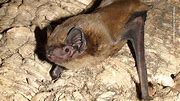When we think of bats, many of us envision these fascinating creatures darting through the night sky in search of insects. But did you know that some bats also call forests their home? One such species is the Leisler’s bat, a classic forest dweller native to Europe. These bats rely on tree hollows and structurally diverse forests for roosting and breeding.
As our world changes, so does the habitat of these forest-dependent bats. A recent study sheds light on how modern forestry practices are altering the landscape for these animals, pushing them to seek refuge in unexpected places – human settlements.
The research team behind the study observed a shift in the behavior of Leisler’s bats due to the scarcity of suitable roosting spots in intensively managed forests. Professor Christian Voigt, an expert from Leibniz Institute for Zoo and Wildlife Research (Leibniz-IZW) and University of Potsdam, explains,
“We wanted to know how Leisler’s bats respond to the changes brought about by intensive forest management. These bats thrive in diverse deciduous forests with old trees that provide ideal roosting conditions.”
In their quest for new homes, Leisler’s bats are increasingly turning to villages, seeking shelter in structures like old churches, residential trees, parks, and lanes. The dwindling availability of natural roosting sites in forests has forced these bats to adapt and find alternative habitats closer to human populations.
To understand this behavioral shift better, researchers equipped adult Leisler’s bats with miniature GPS loggers in Germany’s Brandenburg state. The data revealed crucial insights into their movement patterns and habitat preferences. Dr Carolin Scholz from Leibniz-IZW highlights the significance of this data:
“Detailed analysis of bat movements allowed us to understand their habitat selection at a granular level – from specific tree species in forests to small-scale structures like hedges.”
The study uncovered that Leisler’s bats show a preference for oak-rich forests while avoiding coniferous environments like spruce-dominated woods. The presence of old trees, especially oaks with hollows ideal for roosting, plays a vital role in attracting these forest-dwelling bats.
Interestingly, amidst their search for new roosts, Leisler’s bats have been found frequenting urban areas more frequently than before. Bat expert Uwe Hoffmeister notes,
“These nocturnal creatures are exploring village centers and historic buildings as alternative roost sites due to diminishing options in managed forests.”
The findings underscore the importance of preserving old trees not only in forests but also within urban landscapes as critical refuges for wildlife like Leisler’s bats. Sustainable forestry practices that promote structural diversity without compromising economic benefits are key to ensuring the long-term survival of these forest-dependent species.
Moreover, challenges loom on the horizon as wind energy expands into forested areas where these bats reside. The risk posed by wind turbines is significant as they can inadvertently attract and harm flying animals like Leisler’s bats mistaking them for tall trees at dusk.
Voigt stresses,
“Understanding bat behavior is crucial when planning wind turbine installations near their habitats.”
By integrating data from studies like this one into conservation efforts and land management strategies,the delicate balance between human development and wildlife preservation can be maintained effectively.









Leave feedback about this